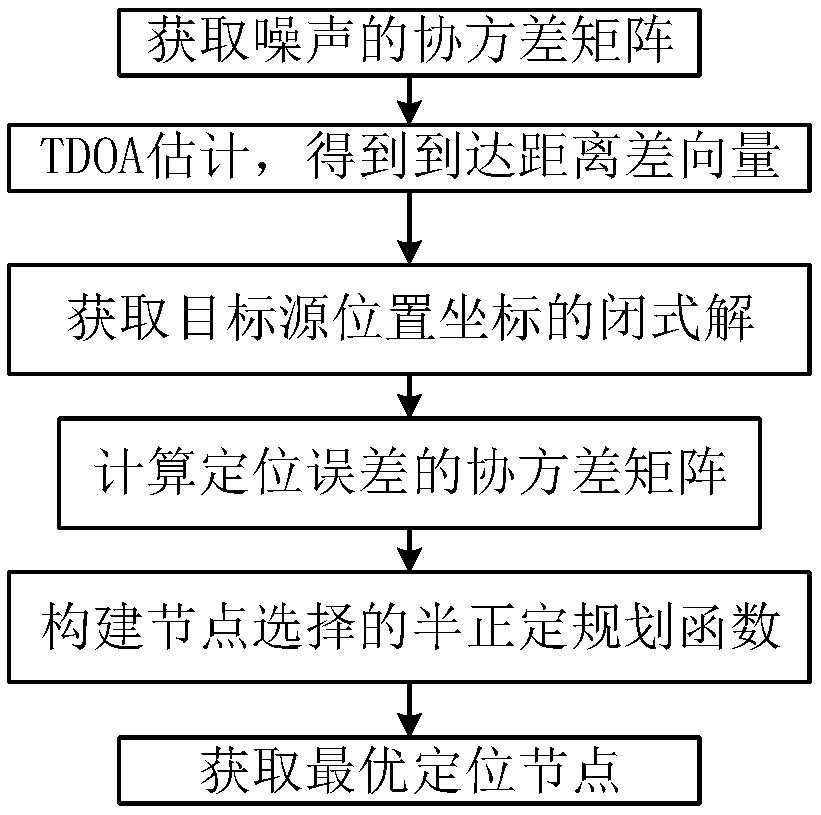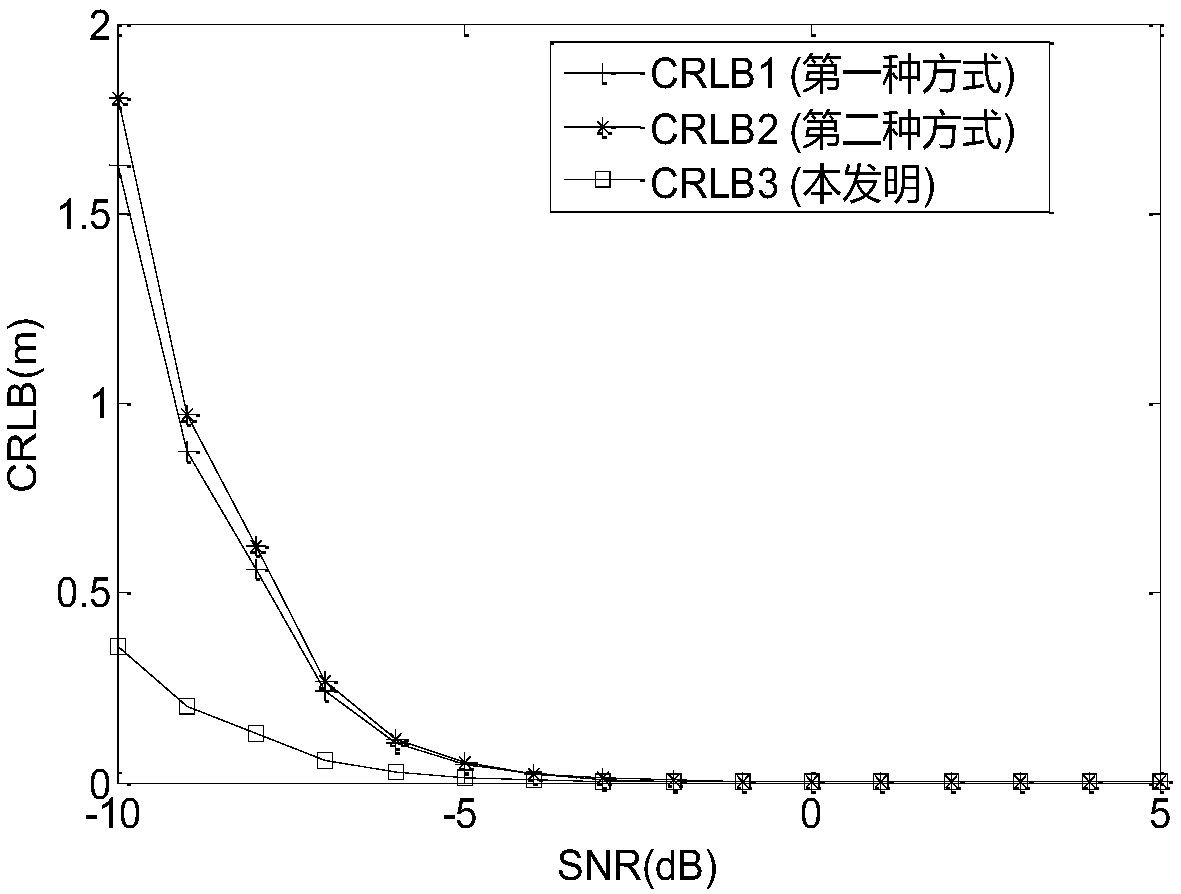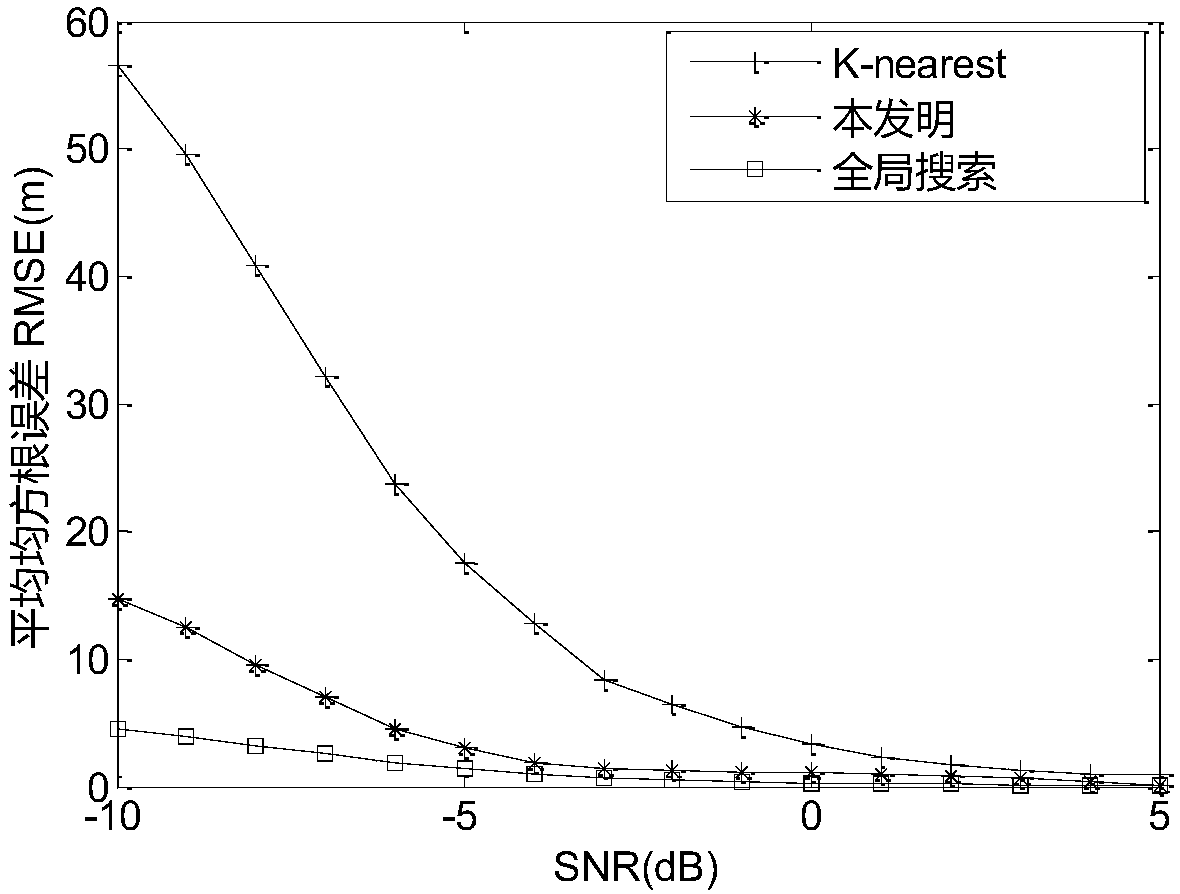Optimal selection method of positioning node facing TDOA
A technology for positioning nodes and nodes, which is applied in the field of signal processing, can solve problems such as high system computational complexity, poor positioning performance, and large energy consumption, and achieve the effects of improving positioning accuracy, reducing TDOA estimation errors, and reducing energy consumption
- Summary
- Abstract
- Description
- Claims
- Application Information
AI Technical Summary
Problems solved by technology
Method used
Image
Examples
Embodiment Construction
[0053] The present invention will be further described in detail below in conjunction with the accompanying drawings and specific embodiments.
[0054] refer to figure 1 . A TDOA-oriented positioning node optimization method, comprising the steps of:
[0055] Step 1) Obtain the covariance matrix Q of Gaussian white noise n:
[0056] (1a) From TDOA estimation theory, deduce the Cramereau bound of TDOA estimation error
[0057]
[0058] where B is the signal bandwidth, B n is the input noise bandwidth, T is the signal integration time, γ i is the equivalent input SNR,
[0059] (1b) The received signal-to-noise ratio of the reference node γ 1 bring in Obtaining the Cramereau Bound of TDOA Estimation Error
[0060]
[0061] Among them, γ i is the receiving signal-to-noise ratio of the i-th sensor node, d i is the distance.
[0062] (1c) will As the main diagonal element of the covariance matrix Q of Gaussian white noise n, the covariance matrix Q of Gaussi...
PUM
 Login to View More
Login to View More Abstract
Description
Claims
Application Information
 Login to View More
Login to View More - R&D
- Intellectual Property
- Life Sciences
- Materials
- Tech Scout
- Unparalleled Data Quality
- Higher Quality Content
- 60% Fewer Hallucinations
Browse by: Latest US Patents, China's latest patents, Technical Efficacy Thesaurus, Application Domain, Technology Topic, Popular Technical Reports.
© 2025 PatSnap. All rights reserved.Legal|Privacy policy|Modern Slavery Act Transparency Statement|Sitemap|About US| Contact US: help@patsnap.com



